Bruce Dowbiggin
Unequal Measures: Trudeau Civil Liberties Aren’t Civil And They’re Not About Liberty
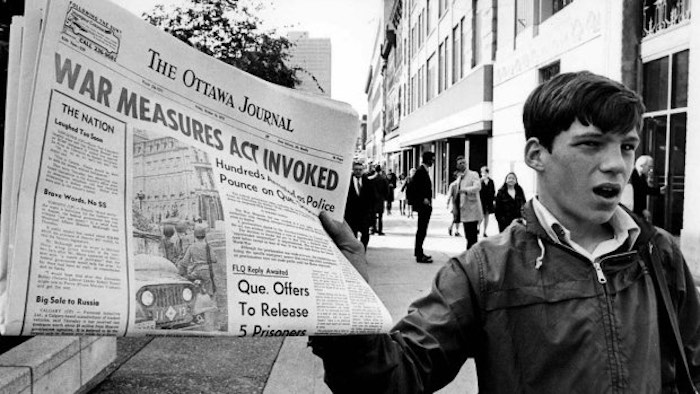
Sign up today for Not The Public Broadcaster newsletters. Hot takes/ cool slants on sports and current affairs. Have the latest columns delivered to your mail box. Tell your friends to join, too. Always provocative, always independent.
There is no freedom without order under the law, and there can be no order under the law without freedom.” — John Turner
While the Inquiry into the Emergency Measures Act— also known as Here, You Take Responsibility— grinds on in search of someone to blame for The Great Ottawa Parking Problem, it might be instructive to divert our attention away from duelling police forces and shirking Ottawa politicians.
Perhaps, as Rex Murphy suggested this week’, we should go to first principles. To wit, why did a prime minister who loves a photo op the way Cardi B. loves a twerk not at least attempt a public meeting with the leaders of the Convoy?
No one is suggesting he go all craven the way he did with BLM and Indigenous leaders, taking a knee or wearing a head dress (though he might have liked to play dress-up in a sleeveless leather vest.) He could have dramatically refused to accede to their demands. The CBC, CTV and Global cameras would have recorded every juicy moment for endless regurgitation on their news programs. Perfect.
Instead Justin chose to go all Bruno Ganz , retiring to a bunker to issue demeaning statements about the low estate of the protesters and their proximity to Nazis and white supremacists. To cover his retreat CBC host Nil Kuksal— who still has a job— helpfully suggested maybe Putin was behind the protest. (Maybe Poutine, Nil, but not Putin.)

While he couldn’t get to the Residential School cemeteries fast enough in 2021, Justin dodged the Hill, claimed he had the virus and let events spiral out of control among Ottawa’s mayor and police, the OPP, and the RCMP. His deep-secret undercover act worked like a charm on the Canadian media. None identified that not meeting with the Convoy— hardening the resistance— as the turning point. Instead they picked up on his fallacious claim that over half the funds supporting the Truckers came from outside Canada, fuelling their dark-web fantasies.
And as we wrote on Feb. 24, they also made the story about themselves. “While the stalemate dragged on, heart-wrenching stories of reporters scorned and told to “get lost” dominated the feed of the Media Party. One Radio-Canada stalwart was actually shoved live on-air. Gasp… It was poignant to hear how people supported by government handouts bravely did the jobs reporters have done for ages without complaint. They were the stars of their coverage, and we were going to hear about it.”
It was at this point in the protest that the comparison between the cringing son and his beloved Papa came into stark relief. Canadians of a certain age could well remember that, while his colleagues scattered, Pierre Trudeau stood up to the projectiles of Quebec separatists as he waited on the reviewing stand for the 1968 St. Jean Baptiste parade. That bit of theatre won him 15 years in the PMO.

(The only thing giving his son 15 years in office won’t be the hostility of a Convoy, but the loving embrace of Jagmeet Singh’s NDP.)
Back to Trudeau père et fils. As we know now, Justin did appropriate one of his Papa’s stratagems. Having declined to govern from the front, he invoked the War Measures Act, now helpfully renamed the Emergency Measures Act. To do so he cited truckers (brandishing Quebec fleur de lys BTW) pissing on the National Cenotaph, Nazi and Confederate flags, hassling civil servants for wearing masks and incidents of violence that proved totally fabricated. And those damn honking trucks.
Trudeau also pressured GoFundMe and other crowd-funding outlets into refusing to allow accounts to support the truckers. Then he sent in the police to rough up the truckers and seize the bank accounts of the organizers. (In the words of Liberal MP Mark Gerretson the police beatings were the “gold standard”.)
The pesky New York Times broke the spell, reporting that police had advanced with guns drawn. Immediately, CBC grandee Carol Off denounced the Times’ story. Then video appeared showing—oops— a squad of cops arresting a man in a van at gunpoint. The Times then lectured their “see no evil” junior cousins on how to cover a riot. How embarrassing.
Was it justified? At least his father had kidnappings, murder and a recent history of bombings to fall back on when he strong-armed the War Measures Act in 1970. As Steve Paikin relates in his thorough upcoming bio of former PM John Turner, Trudeau was asked by the Quebec National Assembly to act. Despite misgivings within his own party and the bold dissent of David Lewis’ NDP, the Act was proclaimed by PET.

Trudeau also took the opportunity of armed Canadian soldiers on the street to lock up anyone who’d indicated separatist sympathies in the past, creating a bitterness that eventually led to René Levêsque’s Parti Quebecois wining election in 1976.
The dramatic move seemed justified two days later when the body of Quebec cabinet minister Pierre Laporte was found in a car at St. Hubert airport, and when kidnappers holding British consul James Cross threatened to kill him if they weren’t allowed free passage to Cuba. In the end, Cross was freed, the murderers were flown to Cuba and Trudeau was re-elected (soon to visit Castro’s Cuba himself) .
Still, doubts lingered about how big a threat the FLQ had been; it turned out there were maybe 10 people involved in the kidnappings. Turner, who died in 2020, did note that he hoped Canadians would eventually see the crucial evidence upon which the harsh declaration was made. “Until that day cones, Canadians will not be able to fully appraise the course of action which has been taken by the government.” Canadians are still waiting, Paikin writes, as the evidence remains hidden.
That’s a brazen stunt Justin can get with. Bury the evidence. Maybe in a Rez school cemetery. What he couldn’t bury was the international scorn for his overreach and his weasel disappearance. Here’s the Financial Times, the voice of British business, on the faux-Emergency act. “The measures are designed to respond to insurrection, espionage and genuine threats to the Canadian Constitution rather than peaceful protest, no matter how irritating and inconvenient,”
Here’s the NY Times shooting holes in the media’s demonizing of the truckers’ behaviour: “They have a right to be noisy and even disruptive. Protests are a necessary form of expression in a democratic society, particularly for those whose opinions do not command broad popular support.” Here’s the Wall Street Journal on Trudeau’s enormous gaffe imposing martial law. Here’s Piers Morgan on Trudeau’s strategy that went unchallenged in his purchased media.
You get the picture. Which puts you one step ahead of the PM and his purchased media pals. To them, “freedom’s just another word for nothing left to lose”.
Bruce Dowbiggin @dowbboy is the editor of Not The Public Broadcaster (http://www.notthepublicbroadcaster.com). A two-time winner of the Gemini Award as Canada’s top television sports broadcaster, he’s a regular contributor to Sirius XM Canada Talks Ch. 167. Inexact Science: The Six Most Compelling Draft YearsIn NHL History, , his new book with his son Evan, was voted the eighth best professional hockey book of by bookauthority.org . His 2004 book Money Players was voted seventh best, and is available via http://brucedowbigginbooks.ca/book-personalaccount.aspx
Bruce Dowbiggin
Healthcare And Pipelines Are The Front Lines of Canada’s Struggle To Stay United

Ottawa and Alberta have reached a memorandum of understanding that paves the way for, among other things,. a new oil pipeline in return for higher carbon taxes.. How’s it doing? B.C. and Quebec both reject the idea. The Liberals former Climate minister resigned his cabinet post.
The most amazing feature of the Mark Carney/Danielle Smith MOU is that both politicians feverishly hope that the deal fails. Carney can tell Quebec that he tried to reason with Smith, and Smith can say she tried to meet the federalists halfway. Failure suits their larger purposes. Carney to fold Canada into Euro climate insanity and Smith into a strong motive for separation.
We’ll have more in. our next column. In the meantime, another Alberta initiative on healthcare has stirred up the hornets of single payer.
To paraphrase Winston Churchill, “Canada’s health system is the worst in the world. Except for all the other systems.” If there is anything left that Canadians agree upon it’s that their provincial healthcare plan is a disaster that needs a boatload of new money and the same old class rhetoric about two-tier healthcare.
Both prescriptions have been tried multiple times since Tommy Douglas made single-payer healthcare a reality. As a result today’s delivery systems are constantly strained to breaking and the money poured in to support it evaporates in red tape and vested interests.
But suggest that Canada adopt the method of somewhere else and you get back stares. Who does it better? How can we copy that? Crickets. Then ask governments to cut back and create efficiencies. No one wants to tell the unions they are the first to move. As a result, operating rooms sit empty for lack of trained nurses and rationed doctors. The system is all dressed with nowhere to go.

There are many earnest people trying their best to fit the square peg in the round hole. But so far it has produced a Frankenstein quilt of private clinics in other provinces handling overflows and American hospitals taking tens of thousands of overflows or critical cases. Ontarians travelling to Quebec for knee surgery. Albertans heading to eastern B.C. for hips and shoulders. Nova Scotians going to Boston for back surgery.
To say nothing of the legions of Canadians on waiting lists for terminal cancer or heart problems who, in despair of dying before seeing a specialist in 18-24 months, voyage to Lithuania, India or Mexico to save their lives. Everyone knows a story of a family member or friend surgery shopping. Every Canadian health authority sympathizes. But little solves the problem.
Which has led to predictable grumbling. @Tablesalt13 if the Liberals hadn’t surged immigration over the last 4-5 years and if all of the money spent on refugees and foreign aid was redirected to health care how much shorter would Canada’s medical waitlists be?

And if any small progress is made the radical armies opposed to two-tiered healthcare raise a stink in the media, stopping that progress in its tracks. Suggesting public/ private healthcare systems is a quick trip to a Toronto Star editorial and losing your next election.
Into the impasse Alberta has introduced Bill 11 to create a parallel private–public surgery system that allows surgeons to perform non-urgent procedures privately under set conditions, moving ahead with the premier’s announcement last week. The government says the approach will shorten wait times and help recruit doctors, while critics argue it risks two-tier care.
The legislation marks a major shift in healthcare reform in Alberta and faces (shock) strong opposition from the NDP which is pairing these reforms with the province’s use of the notwithstanding clause in banning radical trans surgery and medication for minors in the province.
There are examples of two-tiered healthcare elsewhere in the West. France, Ireland, Denmark, Switzerland and Germany, among others, use a dual-tracked system mixing public and private coverages. Reports FHI, “In the most successful European healthcare systems, e.g., Germany and Switzerland, the federal government handles the PEC risk, via national pools and government subsidies, sparing the burden on individual insurers.” While not perfect it hasn’t produced class warfare.
The Americans, meanwhile learned to their chagrin with ObamaCare (the Affordable Care Act, that government healthcare is not the answer. The U.S. heath system replaces government accounting with health insurance rationers as the immoveable force. Many Americans were outside this traditional system, paying out-of-pocket. Under the Obama plan everyone would be forced into a plan, like it or not.
The AFI continues, “ACA has a flawed design. Its architects meant to appeal to the public, promising what the old system could not fully deliver – guaranteed access to affordable health cover and coverage for pre-existing conditions (PECs). But they were wrong about being able to keep your doctor or your old policy if you wanted.
Previously individual policies had to exclude PEC coverage to be financially viable. Yet employer group policies often covered it after a waiting period, but the extra costs were spread over their fellow workers – a real burden on medium and small-sized companies. Under Obamacare, the very high PEC costs are still spread too narrowly – on each of the very few insurers who have agreed to stay as exchange insurers.”
In other words getting a universal system that helps the needy while not degrading treatment is illusory. Alberta is willing to admit that fact. Like agreement on pipelines it will face nothing but headwinds from the diehards (pun intended) who still believe Michael Moore’s fairy tales about a free system in Canada. And will do nothing to bind Canada’s warring factions.
Bruce Dowbiggin @dowbboy is the editor of Not The Public Broadcaster A two-time winner of the Gemini Award as Canada’s top television sports broadcaster, his new book Deal With It: The Trades That Stunned The NHL And Changed hockey is now available on Amazon. Inexact Science: The Six Most Compelling Draft Years In NHL History, his previous book with his son Evan, was voted the seventh-best professional hockey book of all time by bookauthority.org . His 2004 book Money Players was voted sixth best on the same list, and is available via brucedowbigginbooks.ca.
Bruce Dowbiggin
Elbows Down For The Not-So-Magnificent Seven: Canada’s Wilting NHL Septet

The week after Grey Cup is always a good time to look in for our first serious analysis at how Canada’s NHL teams are doing. So let’s take a quick… WHOA… what’s happening here?
If the playoffs were to begin next week (we wish) then it would be a cold breakfast for teams in Elbows Up. Just two clubs—Winnipeg and Montreal— would even qualify for the postseason. And the Jets have just found out their star goalie Connor Hellybuyck is unlikely to play much before mid-January.
The two putative Canadian hopes for a first Stanley cup since 1993— Toronto and Edmonton— are sucking on vapour trails. After being raked 5-2 by Montreal, the Leafs have just a 24.9 percent chance of making the playoffs. Conor McDavid’s Oilers have a better percentage but their same old goaltending woes and a ticking clock on McDavid’s back.
Granted that, going into the weekend, no team in the East was more than four points out of the wild-card spot while all but three teams were within three points of a playoff spot in the West. But the Canadian teams are stuck behind some premium teams and need lotsa’ luck so they end up like Max Verstappen not Lance Stroll.
Maybe a Canadian men’s Olympic gold medal can reduce the sting of no Cup, no future for another season. But it won’t save the jobs of coaches in Calgary, Toronto and Vancouver unlikely to survive also-ran status. Let’s take a close look at the not-so-magnificent seven starting west to east.
Vancouver: The Nucks have a sterling 4 percent chance of making the postseason as of this writing. In the powerful Western Conference that’s still an insult to a franchise that hasn’t recovered from the hasty 2013 firing of GM Mike Gillis—who won… let us us see… two Presidents Trophies and six Western Conference titles in a row. Since then? Uh, bagel.
It’s nice that Elias Petterson has come back from the morgue this season. But it will come down to goalie Thatcher Demko staying healthy and whether ownership wants to go full tank or just a quarter-tank for a draft pick. Hard to see Adam Foote surviving as coach.
Calgary: Speaking of tanking, everyone in Calgary wants the Flames to do a teardown for the top picks in the 2026 Draft. Everyone, except, for the Flames absentee owner Murray Edwards and his robo-spokesman Don Maloney. They want the five percent chance at a playoff spot and a mid-round first draft pick. The Flames missed the chance to restructure in 2023 when Johnny Gaudreau and Matthew Tkachuk departed. But again, denialism in the management suite tried to make it an even trade with Florida, sign huge new contracts and keep pushing. Bad decision.
Only question here is when does the purge begin and what can they get to help Dustin Wolf— signed for seven more years— in net?
Edmonton: We’ve written at length here and here about the McDavid saga. He and the management team halved the baby with a short-term deal to pretend he’s staying in the Chuck. Their healthy chance of making the playoffs (75.5 percent) says one thing. Their play in the putrid Pacific— they’re given up six-goals-plus five times in just 24 games— says another. But as long as McDavid and Leon Draisaitl stay healthy they might still finesse a ticket to a their third straight Finals ride.
But if they get near the trading deadline and the postseason is a mirage the noise to trade McDavid will be deafening. And the offers staggering for a capped-out team.
Winnipeg: Last year was supposed to be the Jets big year. Okay, that didn’t work out so well. The Jets kept their core together for another chance at finally making a serious playoff run. So it will all come down, as it has in the past, to the health and playoff juju of Hellybuyck. Their ticket out of the Central Division lies in beating powerful Colorado and Dallas and, if that happens, staying healthy.
The Jets would probably just as well their stars didn’t go get beat up in the Olympics, but that’s unlikely. There’s always been a karma about Winnipeg breaking the Canada Cup jinx. Still a long shot.

EAST
Toronto: So you’re saying Mitch Marner wasn’t the problem with the highly rated Maple Leafs never getting as far as the Conference Finals? They’re 3-5-2 in their last ten, their captain is still a sulky figure— only now his output doesn’t make it worthwhile. And the Toronto media is trying to do the players’ will to get coach Craig Berube fired for them. The same problems remain from years previous: dubious goaltending and a shallow talent pool on defence.
The biggest problem for the Leafs is their closing window for success. They’re old, have few tradeable assets in the system and have traded top picks away for short-term gains that never appeared. Expect fireworks after the Olympics if this crate doesn’t get moving. New MLSE boss Keith Pelley has no ties to the current administration and will sweep clean.
Ottawa: The Sens have managed to survive the loss of captain Brad Tkachuck to a broken finger. How? Ottawa have gotten goals from 17 different players which means they have balance. And so far they are above average 5-on-5. All good. They’ve also taken advantage of the mediocrity of the Leafs and other Eastern teams to stay afloat.
Their Achilles heel? Between the pipes. Both goalies have a save percentage under .875 and that ain’t going to cut it come spring. As always finances will limit their trades and manoeuvrability.

Montreal: The Habs were the fashionable pick before the season as the Canadian team most likely to get to the Cup they last won in 1993. Defenceman Laine Hutson is all that he promised last year. The dynamic top line of Cole Caufield, Nick Suzuki and Juraj Slafkovsky have cast back to the days of the Flying Frenchmen. Managing expectations in Montreal’s rabid hockey culture— where a misplaced apostrophe can cause chaos—means never taking anything for granted.
Now if only goaltender Jacob Dobes can keep up his play long enough for Sam Montembault to regain his form the Habs could be a thing in the spring. At this rate they might be the only thing.
Bruce Dowbiggin @dowbboy is the editor of Not The Public Broadcaster A two-time winner of the Gemini Award as Canada’s top television sports broadcaster, his new book Deal With It: The Trades That Stunned The NHL And Changed hockey is now available on Amazon. Inexact Science: The Six Most Compelling Draft Years In NHL History, his previous book with his son Evan, was voted the seventh-best professional hockey book of all time by bookauthority.org . His 2004 book Money Players was voted sixth best on the same list, and is available via brucedowbigginbooks.ca.
-

 Opinion1 day ago
Opinion1 day agoLandmark 2025 Study Says Near-Death Experiences Can’t Be Explained Away
-

 Focal Points1 day ago
Focal Points1 day agoSTUDY: TikTok, Instagram, and YouTube Shorts Induce Measurable “Brain Rot”
-
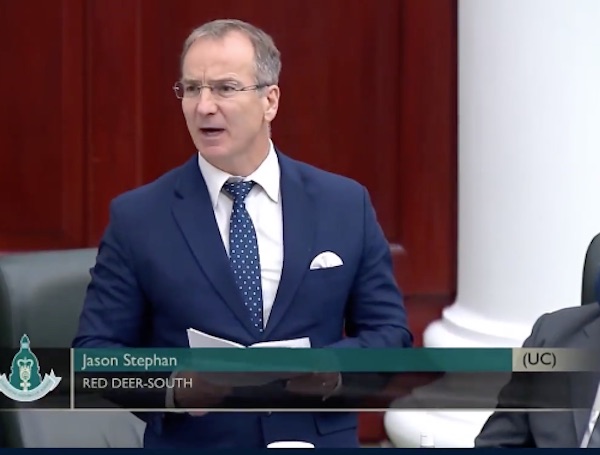
 Alberta1 day ago
Alberta1 day agoRed Deer’s Jason Stephan calls for citizen-led referendum on late-term abortion ban in Alberta
-
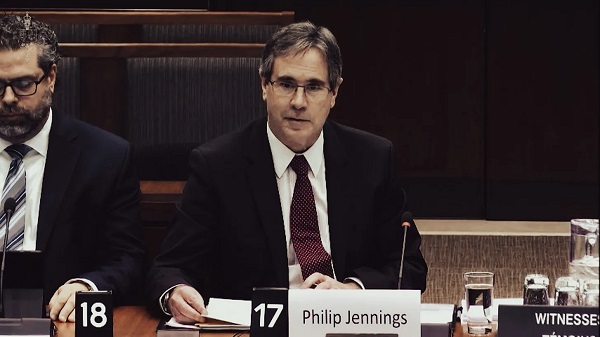
 Business1 day ago
Business1 day agoBlacked-Out Democracy: The Stellantis Deal Ottawa Won’t Show Its Own MPs
-
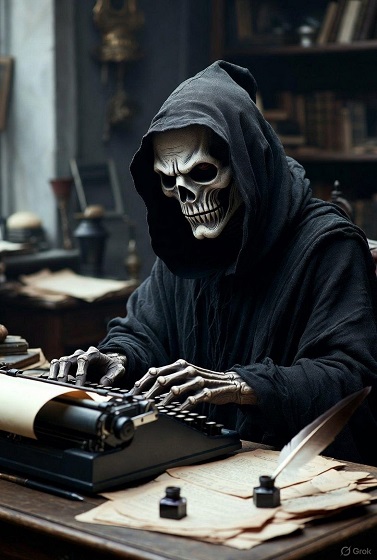
 Health1 day ago
Health1 day agoTens of thousands are dying on waiting lists following decades of media reluctance to debate healthcare
-

 Agriculture18 hours ago
Agriculture18 hours agoHealth Canada pauses plan to sell unlabeled cloned meat
-

 Indigenous1 day ago
Indigenous1 day agoIndigenous activist wins landmark court ruling for financial transparency
-
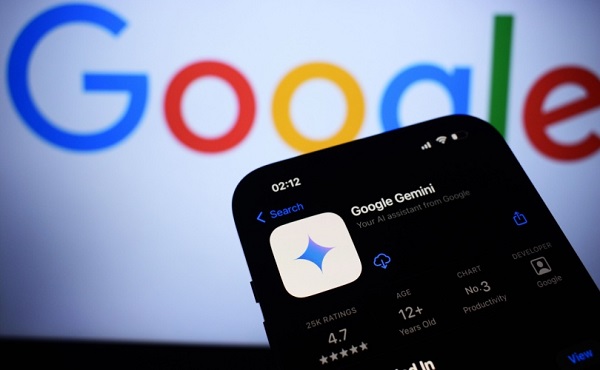
 Artificial Intelligence11 hours ago
Artificial Intelligence11 hours agoGoogle denies scanning users’ email and attachments with its AI software



